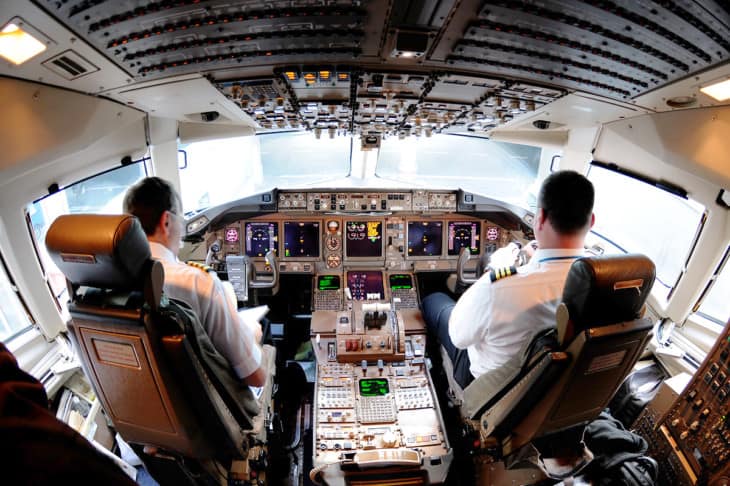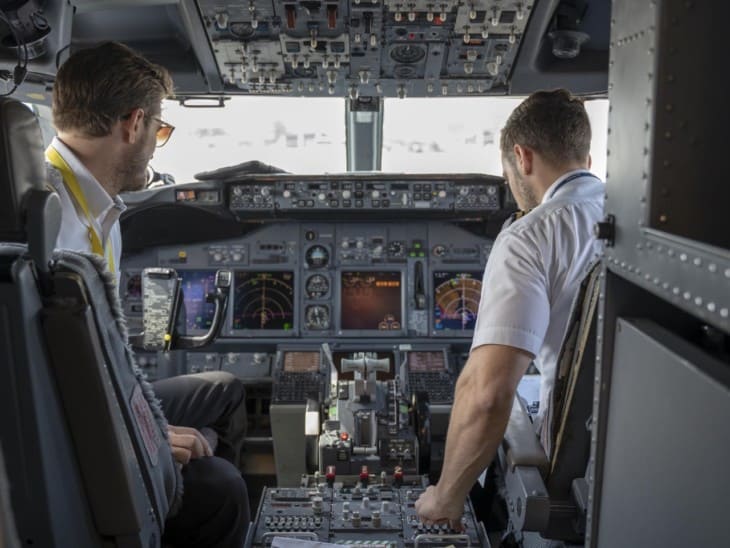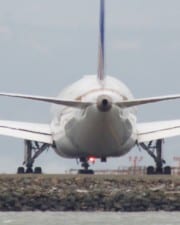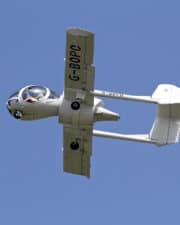While boarding an aircraft, you must have seen two pilots inside the cockpit, busy at work preparing the flight for departure. But why is it called a cockpit? Why not a flight deck? What’s the difference between the two?
Why Is A Cockpit Called A Cockpit?
It is not exactly clear where the term originated, however, there are a few popular references as to how the term cockpit was coined. One such reference dates back to 1580 when the term cockpit meant “a pit for fighting cocks”. Another reference comes from naval jargon where “cock” was an Old English term for “a small boat” and “swain” meant “servant”. Over time, the compartment where the coxswain was seated began to be called a cockpit.
As the name implies, the term cockpit was used to describe a pit where cockfights would occur. Later on, it was used to describe the steering compartment of a sailing vessel by the Royal Navy.
In aviation, the term cockpit is used to describe the place from where the pilot controls the aircraft. It is used interchangeably with the word flight deck. The cockpit contains all the controls a pilot needs to fly the aircraft. One can also think of the cockpit as the nerve center of the entire aircraft.
Flight Deck Vs. Cockpit: What’s The Difference?
The main difference is that a cockpit can be defined as a cavity with a seat that one can strap into for the entire flight whereas a flight deck is a larger version of a cockpit that provides the pilot with space to get out of the seat and walk behind it.
Boeing was the first to introduce the term “flight deck” post-WWII for their larger aircraft (Boeing 747), to emphasize the wider and spacious cockpit as compared to the other aircraft at that time. Basically, solo or tandem seating with entry through the canopy can be called a cockpit. Side-by-side seating with a side door or bottom hatch entry can be called either flight deck or cockpit.

Also, the term cockpit can be used to describe the driver’s cabin in a high-performance sports car or Formula One racing. It is also used to describe the seat of a powerboat racing craft.
This distinction is largely due to the differences in US / British English terminology, although both terms are used interchangeably in day-to-day operations.
Is Cockpit A Sexist Term?
Recently, the FAA has recommended that the term cockpit be replaced with a more gender-neutral term as the number of women in aviation continues to increase day by day.

The FAA has recommended that the word cockpit be replaced by flight deck to promote inclusivity within the airline industry. It was also brought to the FAA’s notice that on several occasions “masculine crew members had wielded the term ‘cockpit’ to exclude or undermine male coworkers.”
Thus, it has been recommended to change the term cockpit into flight deck or something gender-neutral.
What Is The Seat Of A Pilot Called?
Captains usually sit on the left while First Officers sit on the right. A benefit to sitting on the left is that the captain gets a better view of any aircraft approaching head-on.
Also, passengers usually board the aircraft from the left side, hence the left-sitting pilot gets a better view of the terminal building, and he can gauge more accurately if there is any chance of the wingtip colliding with the terminal structure or any obstacles.
What Is The Origin Of Cockpit?
The earliest origin can be found when the term cockpit was used for cockfights. Then, soldiers used it during World War 1 to describe scenes of gore and blood, particularly when describing battles that were fought in urban areas.
It was also used by sailors of the Royal Navy to describe the compartment from where a sailing vessel could be controlled. It was also used to describe a surgeon’s station at the rear of the ship where the wounded would be brought for treatment.
What Is The Etymology Of Cockpit?
The earliest mention of the word cockpit is not even remotely related to aviation. It was used in 1580 when the term cockpit was used to describe the arena where cockfights took place. Thus, implying a tight, enclosed space where a great deal of stress and tension would occur.
Then in 1635, a theater in London was named The Cockpit, which was demolished, and buildings were made for King Charles’s cabinet to work. However, people still called it the cockpit, and it is possible from this that the word cockpit evolved into a synonym for control center. Aviation and naval language share many similarities as the early flying machines were flying boats.
Hence, another reference comes from naval jargon where “cock” was an Old English term for “a small boat” and “swain” meant “servant”. Over time, the compartment where the coxswain was seated began to be called a cockpit. Similarly, the term cockpit was used for a cabin from where a sailing vessel could be controlled, because it is located at the rear and is often in a “pit”
In the 1700s, soldiers used the word cockpit during World War 1 to describe sites of gruesome and bloody combat, especially in urban or close quarters. In the 18th century, the term cockpit was used to describe the station of a ship’s surgeon.
Today, the cockpit of an airliner is usually referred to as the flight deck. This was derived from RAF usage for the separate, upper platform in large flying boats where the pilot and co-pilot were usually seated.
What Is The Meaning Of Breach Cockpit?
A breach of the cockpit is any attempt by an individual to gain unauthorized access to the flight deck for malicious intents and purposes. Any attempt to breach a cockpit is considered a felony and is punishable under federal law.
Prior to 9/11, crews were trained to be compliant and cooperate with hijackers for the safety of the passengers, however, all that changed after 9/11 when airlines changed their policy and now promote an aggressive stance to resist and foil any attempts at hijacking.
9/11 was also the turning point for many airlines in terms of cockpit security. Before the events of 9/11, the cockpit would usually be kept open and crew and passengers could interact with one another. After 9/11, airlines introduced reinforced and bulletproof cockpit doors to deter any hijacking attempts.
Nowadays, most airlines strictly control access to the flight deck by prohibiting anyone from entering the flight deck, especially during cruise. However, once the aircraft is parked at the gate, passengers may request to visit the cockpit or meet the pilots.
Furthermore, some aircraft are equipped with cameras that allow the pilot to verify who would like to gain access to the cockpit. Pilots are also allowed to carry firearms, but they must be trained and licensed to use them in an enclosed and pressurized space.
Air marshals have also been placed on many US flights to deter and tackle any potential hijackers before they even get a chance to breach the cockpit. Despite these measures, attempts to breach cockpits continue to happen.
References ▾
Related Posts













